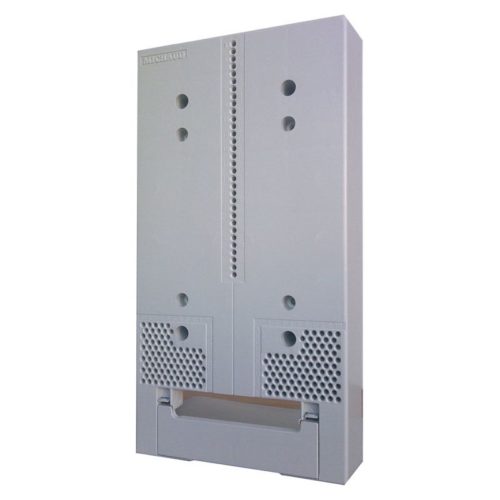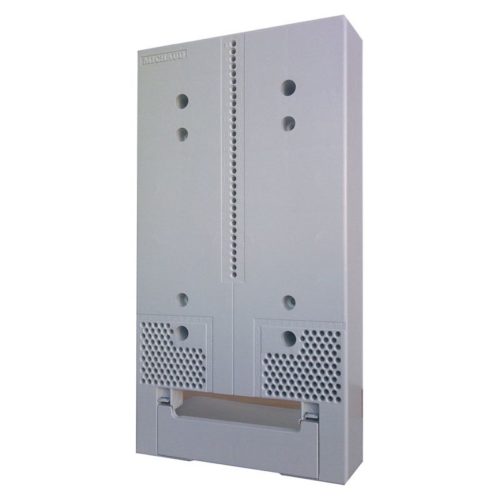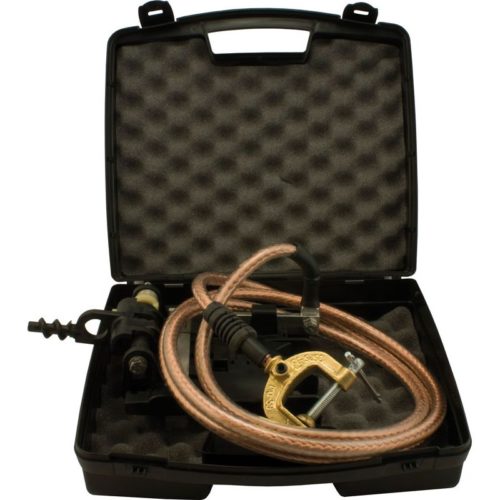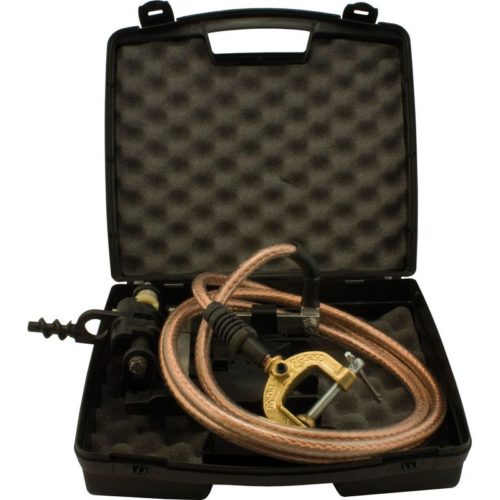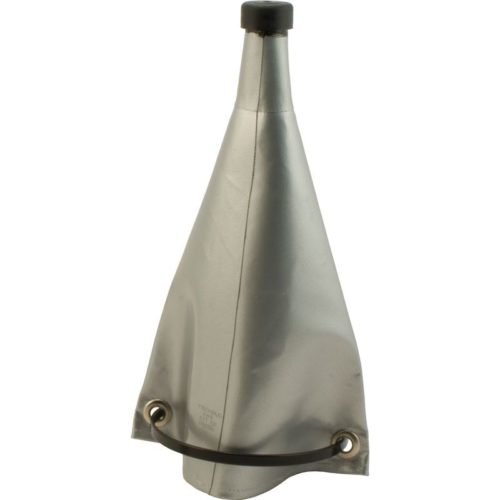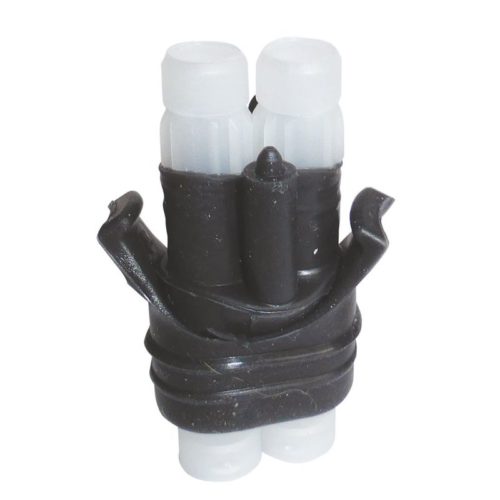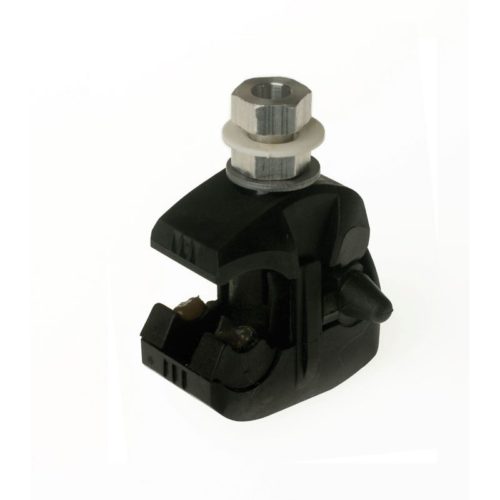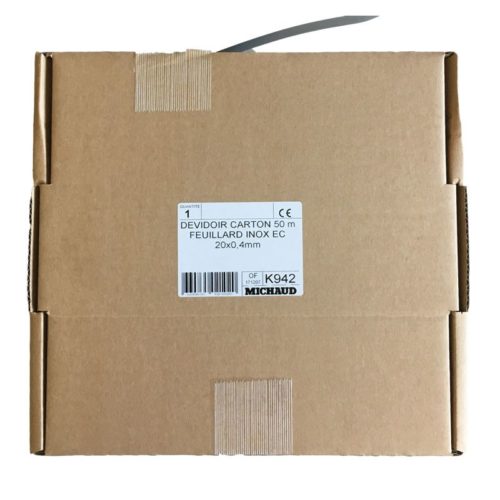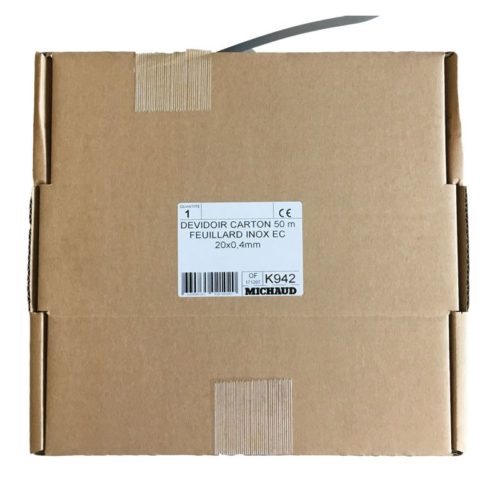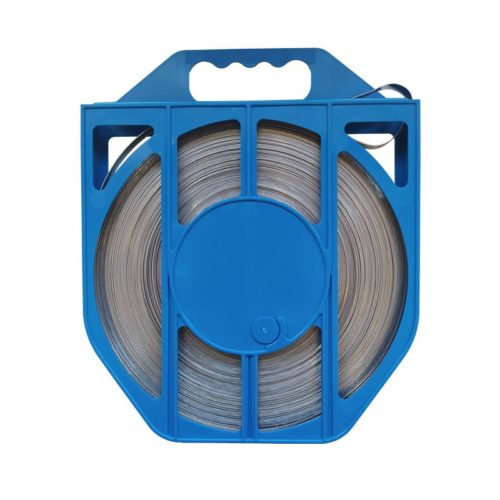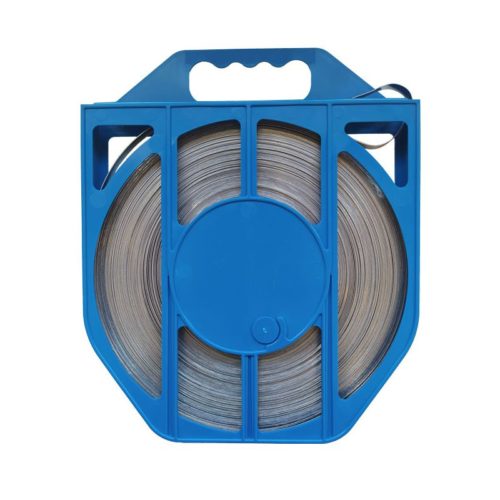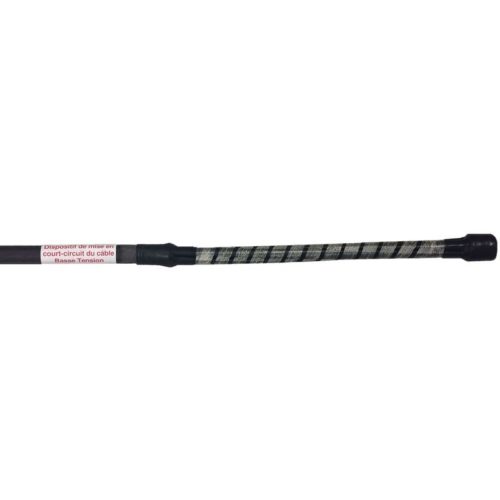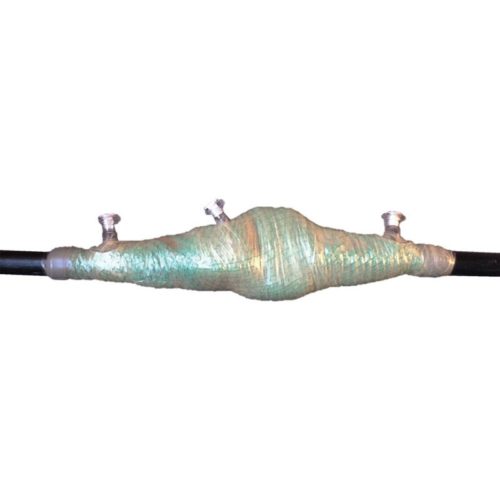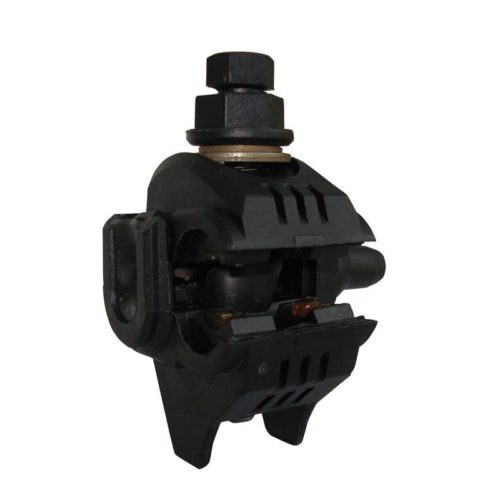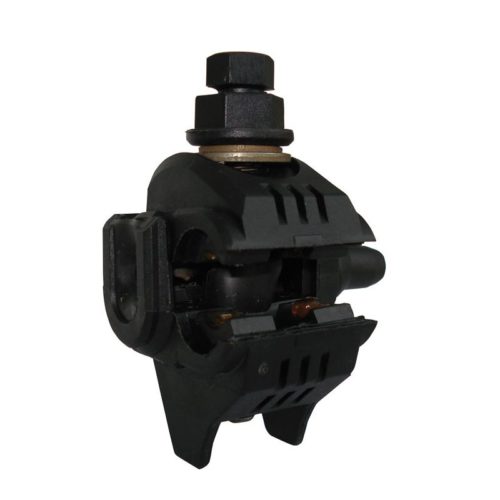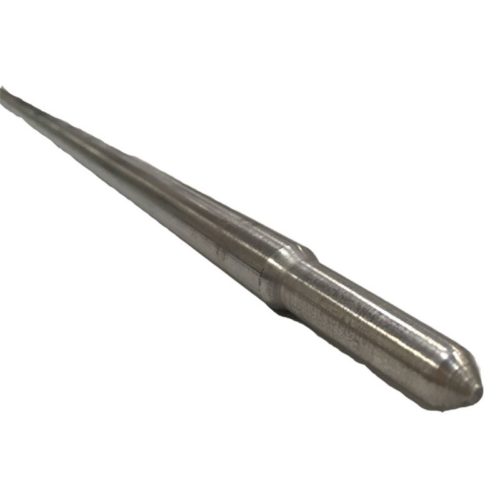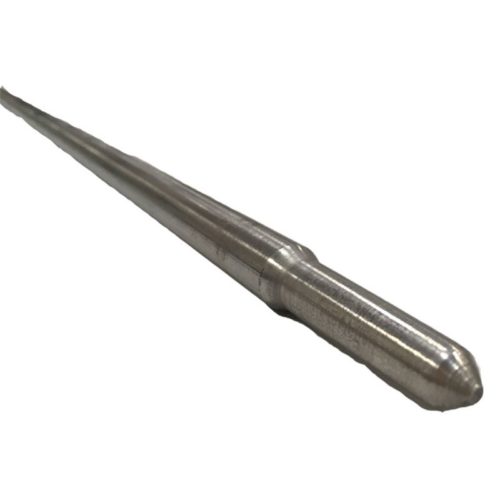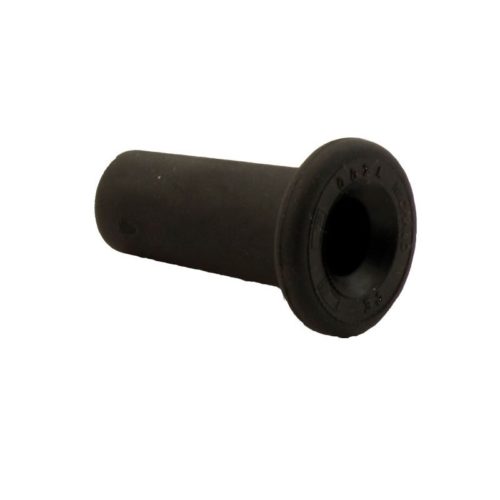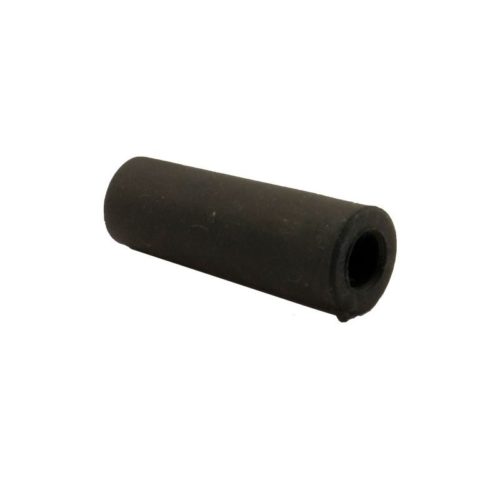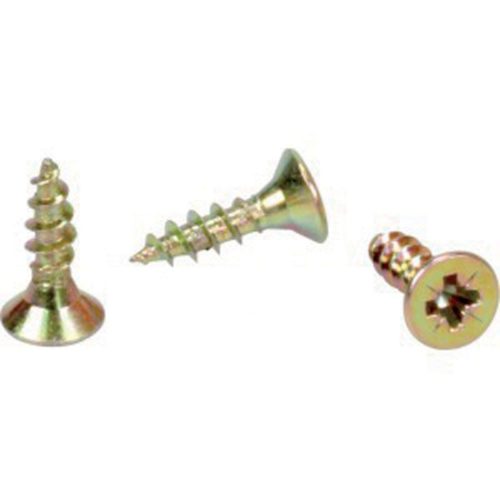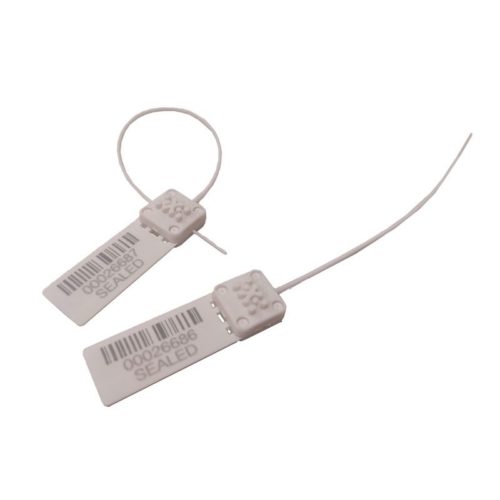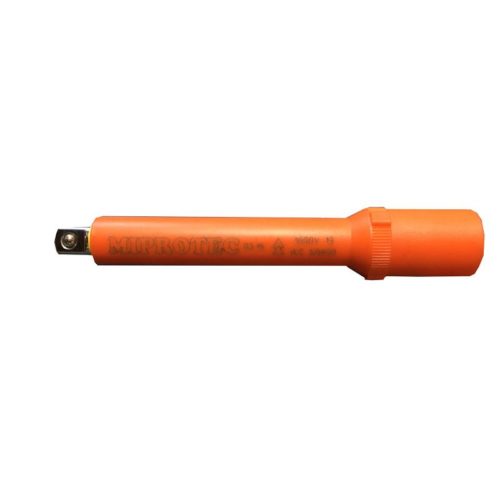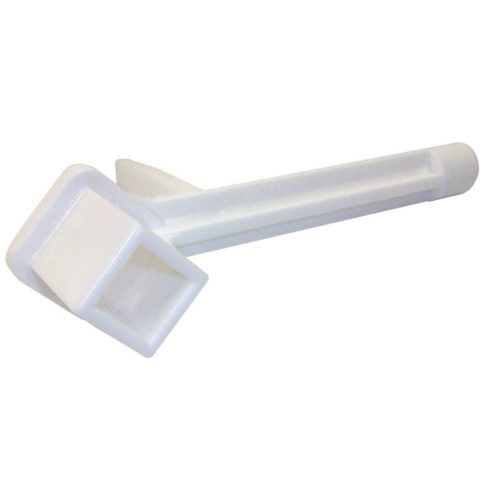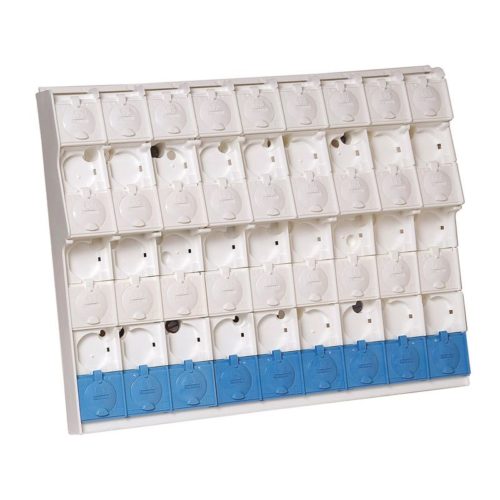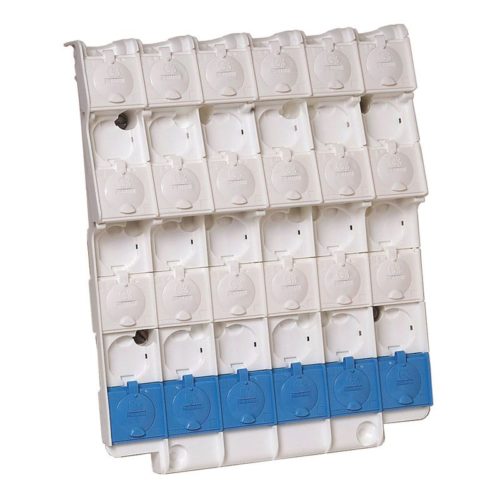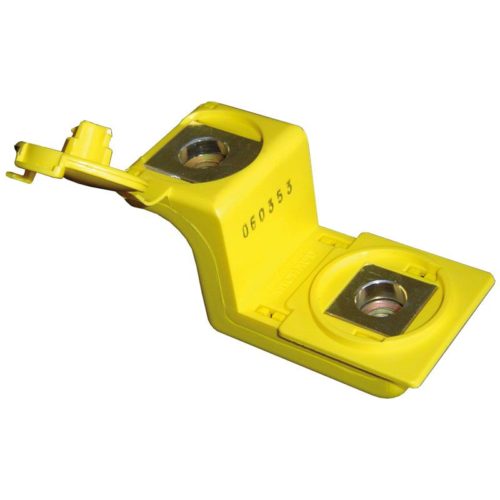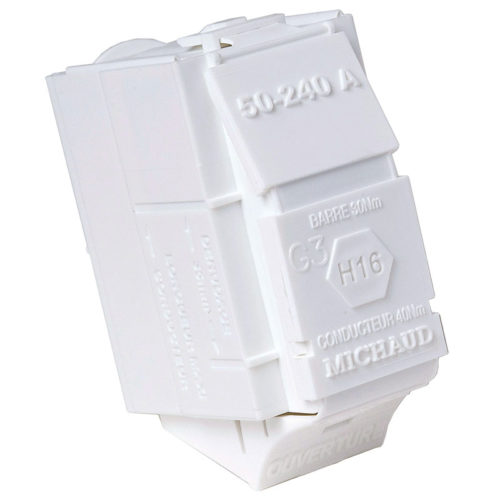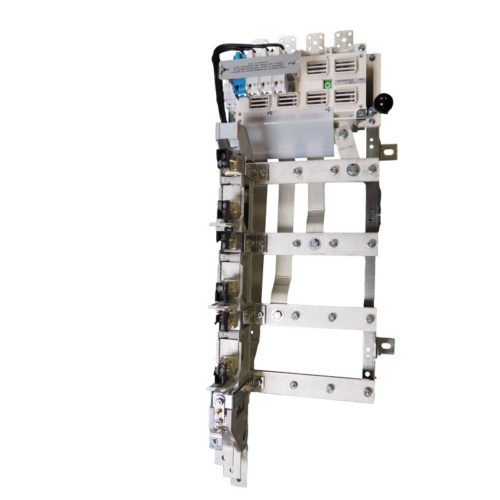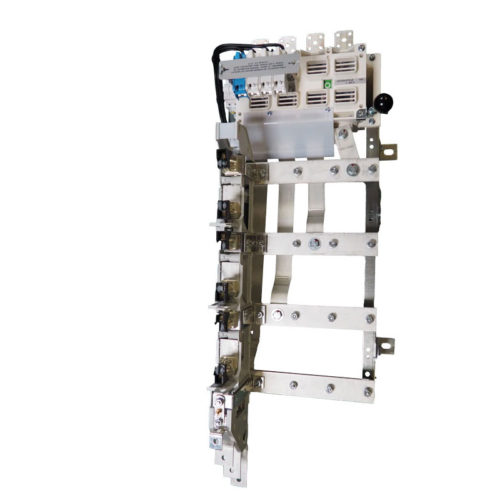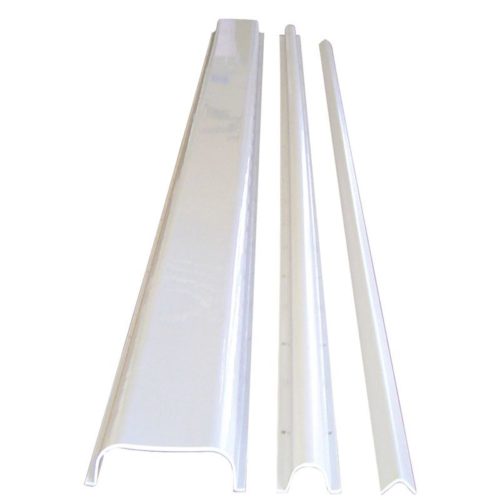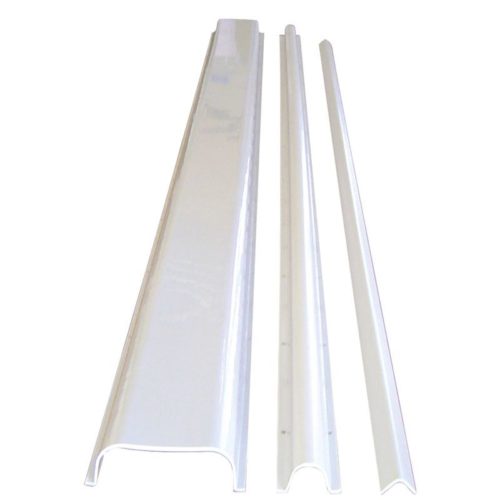-
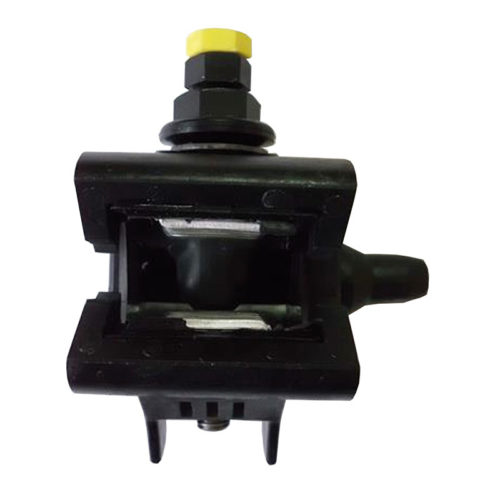
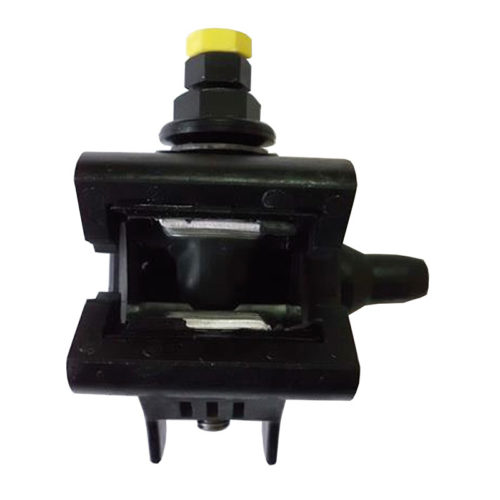 This connector designed to connect the insulated service conductors to the low voltage overhead aluminium alloy or copper bare conductor network. Two versions are available according to the type of conductor to be connected (Al or Cu). The tap and main cables are connected separately step by step to improve the electrical connection: 1. First the tap line is connected by piercing the insulation, 2. Then the main line is connected. Installation can be carried out under a maximum load of 100A.
This connector designed to connect the insulated service conductors to the low voltage overhead aluminium alloy or copper bare conductor network. Two versions are available according to the type of conductor to be connected (Al or Cu). The tap and main cables are connected separately step by step to improve the electrical connection: 1. First the tap line is connected by piercing the insulation, 2. Then the main line is connected. Installation can be carried out under a maximum load of 100A. -
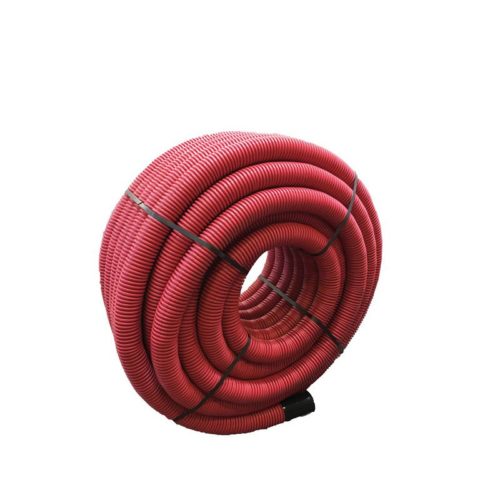
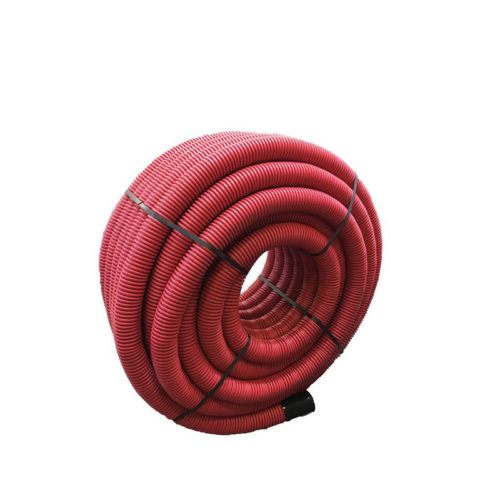 This sheath is used for the protection of underground cables. It is available in ring (with draw needle) or in bar. The junction sleeve allows connection between two ends of sheaths. The seperator allows to facilitate the installation of sheaths and to split each one. The sheath end cap allows to seal the sheath by closing its end.
This sheath is used for the protection of underground cables. It is available in ring (with draw needle) or in bar. The junction sleeve allows connection between two ends of sheaths. The seperator allows to facilitate the installation of sheaths and to split each one. The sheath end cap allows to seal the sheath by closing its end. -
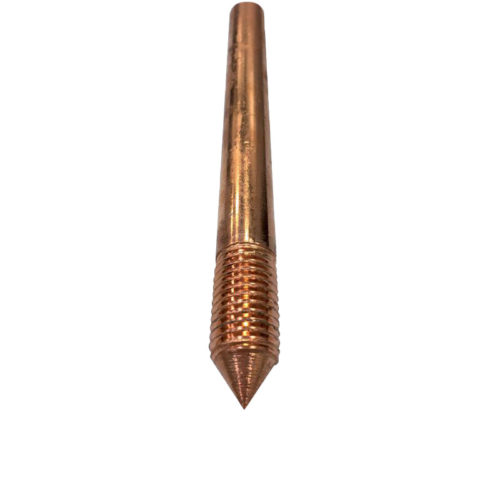
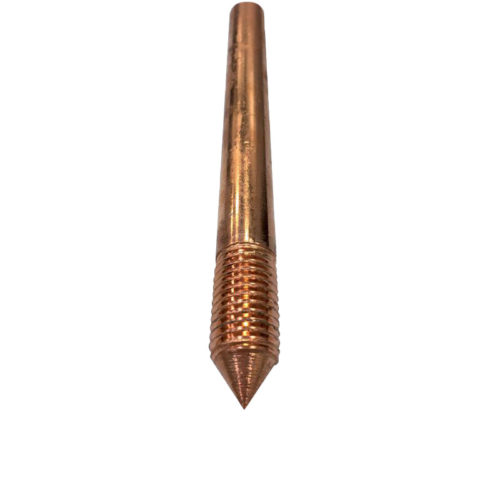 This earth rod is used for the power networks earth system. The thread on both ends makes the earth rod lengthening possible. The copper coating made by electrolytic process gives a resistance to corrosion as well as a good conductivity. The reference standards are EN 50 164-2 and EN 62 561-2. This brass clamp with stainless steel bolts is designed to establish a connection between the earth rod and the conductor. The cable can be fixed radially or axially through the "U" bolt clamp. The brass driving spikes and heads are designed to protect the earth rod during the installation. They enable to preserve the copper coating and its technical features. The brass threaded couplings enable to join two rods and get a deeper earth system.
This earth rod is used for the power networks earth system. The thread on both ends makes the earth rod lengthening possible. The copper coating made by electrolytic process gives a resistance to corrosion as well as a good conductivity. The reference standards are EN 50 164-2 and EN 62 561-2. This brass clamp with stainless steel bolts is designed to establish a connection between the earth rod and the conductor. The cable can be fixed radially or axially through the "U" bolt clamp. The brass driving spikes and heads are designed to protect the earth rod during the installation. They enable to preserve the copper coating and its technical features. The brass threaded couplings enable to join two rods and get a deeper earth system. -
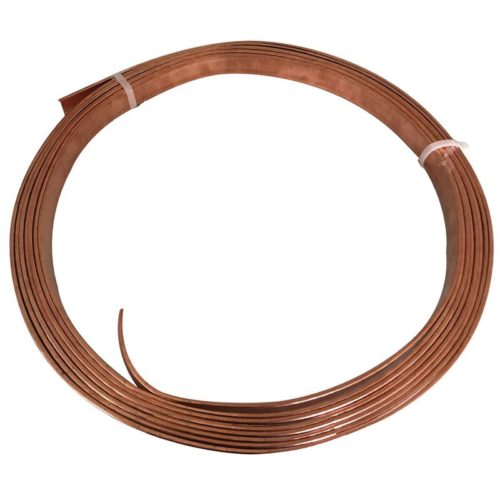
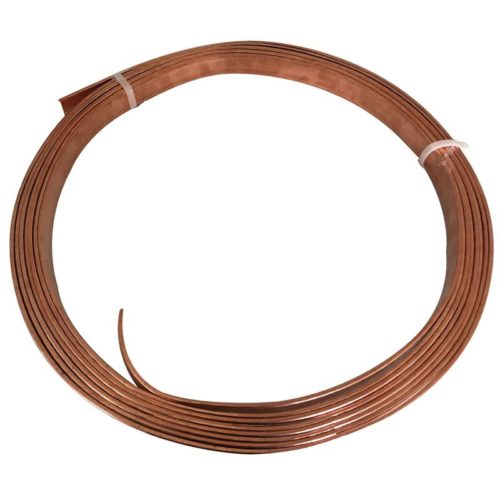 This tape is designed to conduct the electricty into the earth system and to guarantee the default current runoff. If the copper gives an important electrical and the tinned coating protects from theft thanks to the non visible copper coating conductivity. The copper bonded steel offers a good economical alternative to copper. Furthermore Galvanized steel is an economical solution to coppered tinned steel and protect from the theft too. It has a good conductivity.
This tape is designed to conduct the electricty into the earth system and to guarantee the default current runoff. If the copper gives an important electrical and the tinned coating protects from theft thanks to the non visible copper coating conductivity. The copper bonded steel offers a good economical alternative to copper. Furthermore Galvanized steel is an economical solution to coppered tinned steel and protect from the theft too. It has a good conductivity. -
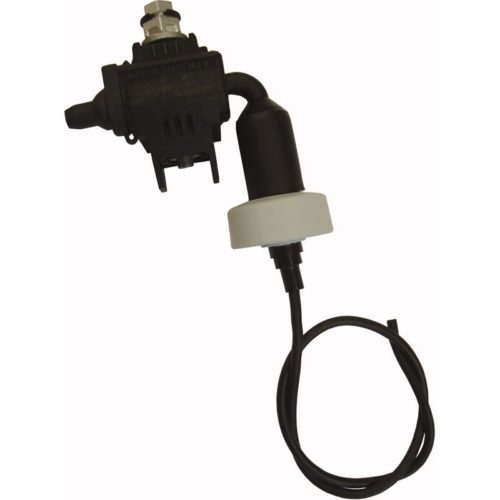
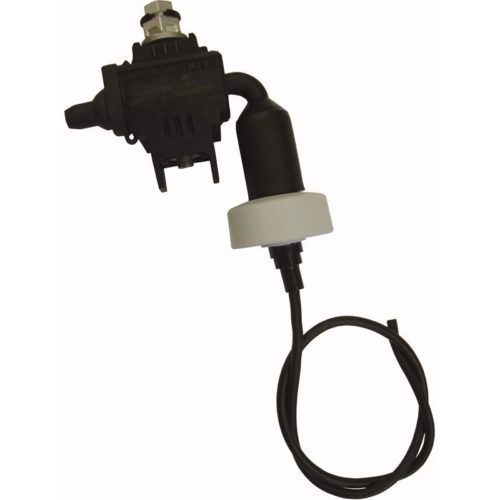 The surge protection device connector (SPD IPC) is designed to protect low voltage overhead lines and electric equipment against over-voltages. It enables the current from the lightning to be led to the ground. The surge protection device connector includes the following elements: - An insulation piercing connector, - A terminal outlet inserted in the end cap of the connector, - A surge protection device (metal oxide overmoulded with silicone) screwed into the terminal outlet, - An earth system tail welded to the surge protection device. The surge protection device reacts: - After a certain number of overvoltages, when the current passing through the surge protection device increases by more than 1mA, - In the case of atmospheric discharge (lightning strike), the current exceeding 65mA. After the surge protection device has performed, the earth system tail physically separates from the connector. The surge protection device then should be replaced with an available spare part (comprising the surge protection device and the earth system tail).
The surge protection device connector (SPD IPC) is designed to protect low voltage overhead lines and electric equipment against over-voltages. It enables the current from the lightning to be led to the ground. The surge protection device connector includes the following elements: - An insulation piercing connector, - A terminal outlet inserted in the end cap of the connector, - A surge protection device (metal oxide overmoulded with silicone) screwed into the terminal outlet, - An earth system tail welded to the surge protection device. The surge protection device reacts: - After a certain number of overvoltages, when the current passing through the surge protection device increases by more than 1mA, - In the case of atmospheric discharge (lightning strike), the current exceeding 65mA. After the surge protection device has performed, the earth system tail physically separates from the connector. The surge protection device then should be replaced with an available spare part (comprising the surge protection device and the earth system tail). -

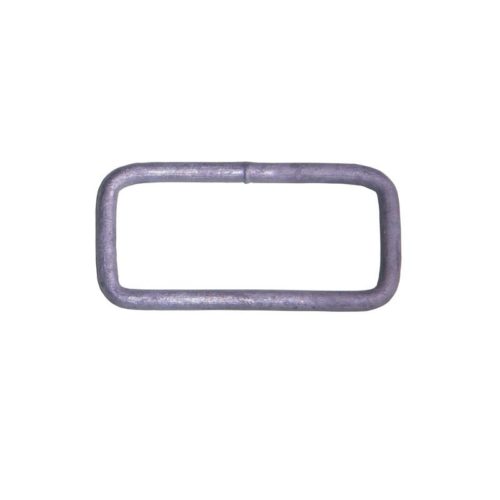 The stainless steel SMART buckle can be used without any special tools: a pair of pliers and a hammer are sufficient. Installation is quick and easy. It can be used for service anchoring system but also for accessories such as ducts, signage, etc. on all types of poles. The yokes and buckles are used to close the strap once it is strapped around the pole. The protection tape and eyes can be used for the implementation of stainless steel strap. These stainless steel buckles are fixed onto the strap to prevent climbing on the pole and the fraud attempt.
The stainless steel SMART buckle can be used without any special tools: a pair of pliers and a hammer are sufficient. Installation is quick and easy. It can be used for service anchoring system but also for accessories such as ducts, signage, etc. on all types of poles. The yokes and buckles are used to close the strap once it is strapped around the pole. The protection tape and eyes can be used for the implementation of stainless steel strap. These stainless steel buckles are fixed onto the strap to prevent climbing on the pole and the fraud attempt. -
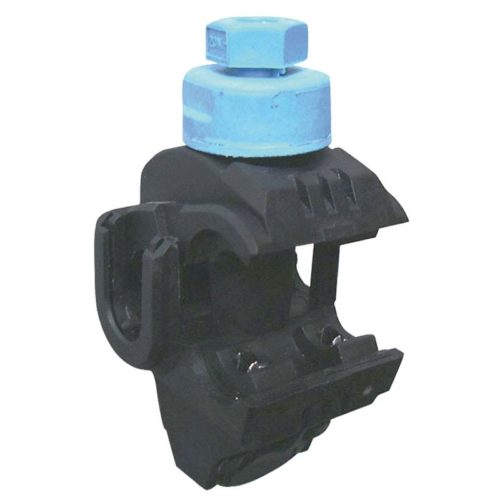
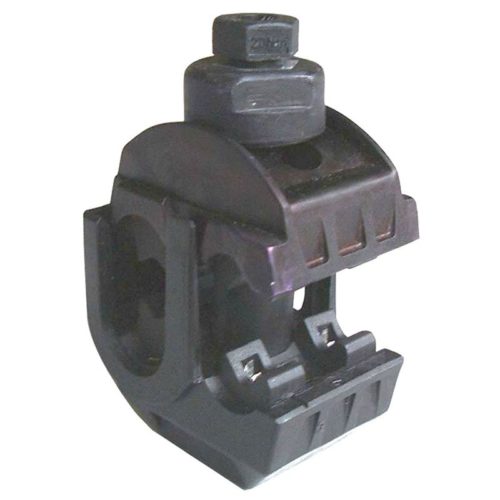 This connector is designed to establish a tap connection on low voltage underground networks. It is located in underground cast or injected boxes. It is used on a main cable, with synthetic or paper insulation, of type: - Circular or sectoral, - Copper or aluminium, - Solid or stranded core. The underground service box is designed to establish a single or double tap from one or 2 line connections from an underground network made up of round or sectoral conductors (as defined in NF C 33-210).
This connector is designed to establish a tap connection on low voltage underground networks. It is located in underground cast or injected boxes. It is used on a main cable, with synthetic or paper insulation, of type: - Circular or sectoral, - Copper or aluminium, - Solid or stranded core. The underground service box is designed to establish a single or double tap from one or 2 line connections from an underground network made up of round or sectoral conductors (as defined in NF C 33-210). -
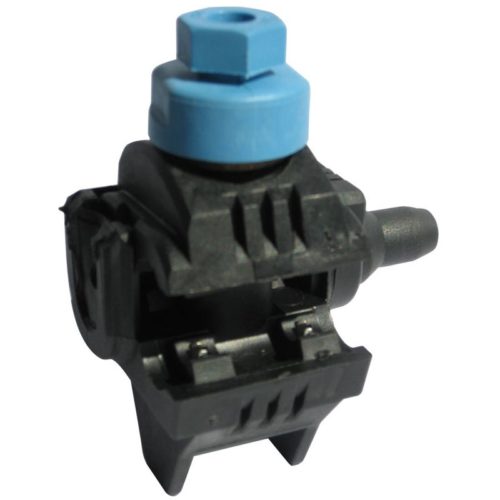
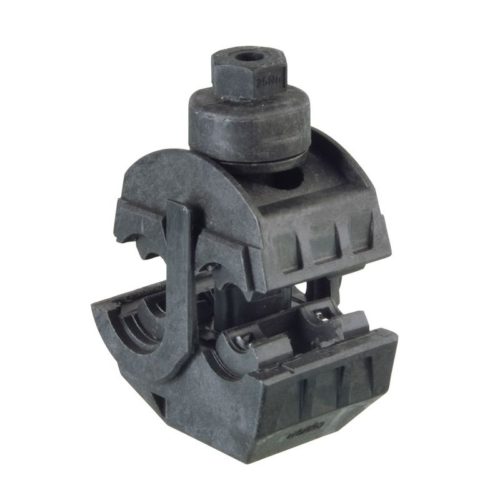 This connector is designed to be used with underground low voltage network for tapping or junction applications. It is implemented in underground cast or injected boxes. It can be used on aluminium, circular or sectoral type cables with paper or synthetic insulation. The underground network box is designed to establish the junction or tap from a round or sectoral underground network (as defined in the NF C 33-210 standard).
This connector is designed to be used with underground low voltage network for tapping or junction applications. It is implemented in underground cast or injected boxes. It can be used on aluminium, circular or sectoral type cables with paper or synthetic insulation. The underground network box is designed to establish the junction or tap from a round or sectoral underground network (as defined in the NF C 33-210 standard). -
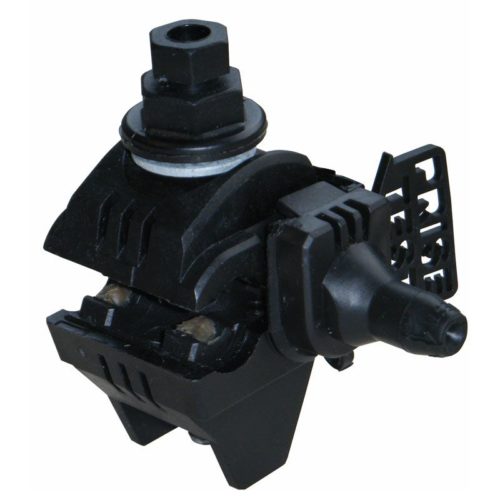
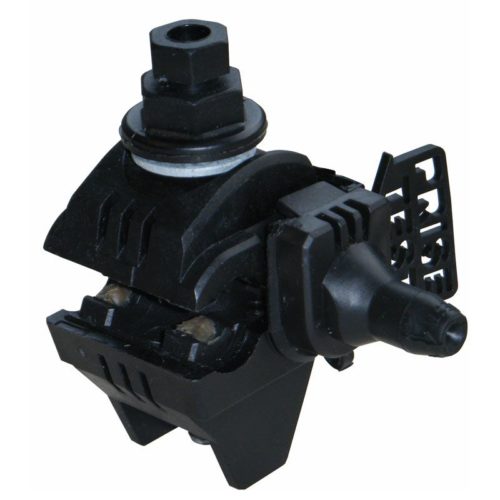 This connector is designed to connect the insulated service conductors to the low voltage A.B.C. (Aerial Bundled Conductors). It is equipped with a Test probe on the flexible sealing end cap. This enables the potential to be checked between 2 connectors installed on neutral and phase conductors and thus ensures good connection.
This connector is designed to connect the insulated service conductors to the low voltage A.B.C. (Aerial Bundled Conductors). It is equipped with a Test probe on the flexible sealing end cap. This enables the potential to be checked between 2 connectors installed on neutral and phase conductors and thus ensures good connection. -
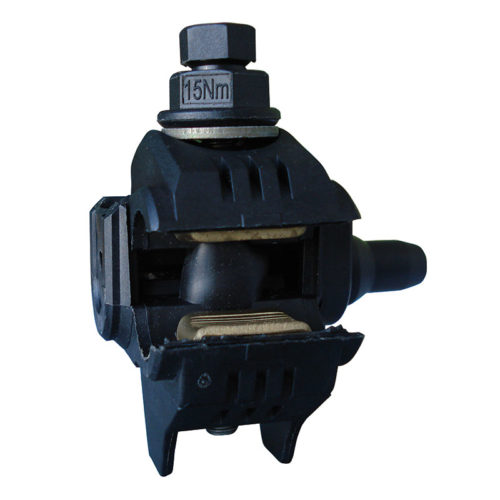
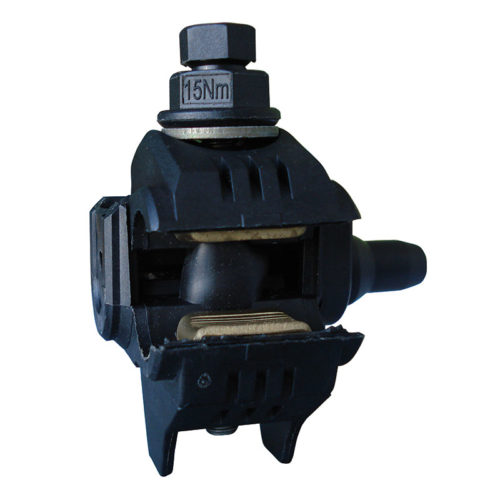 This connector is designed to connect the insulated service conductors to the low voltage overhead copper or aluminium alloy bare conductor network. Two versions are available according to the type of conductor to be connected (Al or Cu): - CNA (with aluminium alloy contact bridges), - CNU (with rough brass contact bridges).
This connector is designed to connect the insulated service conductors to the low voltage overhead copper or aluminium alloy bare conductor network. Two versions are available according to the type of conductor to be connected (Al or Cu): - CNA (with aluminium alloy contact bridges), - CNU (with rough brass contact bridges). -
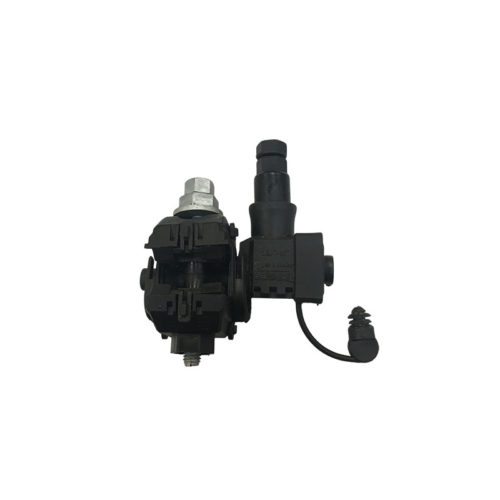
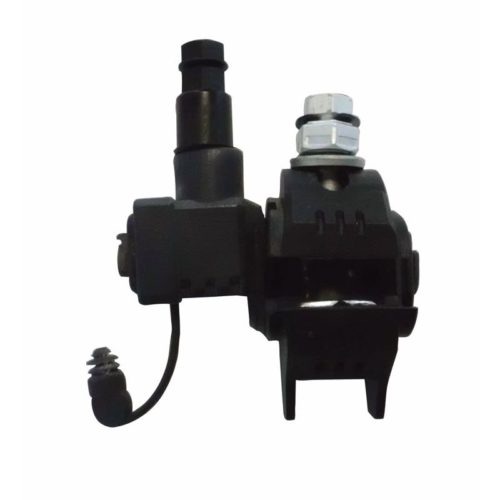 The dismountable tap contact single service connector designed to connect independently the insulated service conductors to the low voltage A.B.C. (Aerial Bundled Conductors). While connection of the main line conductor uses insulation piercing technology, that of the tap line uses stripping technology. The bare conductor service connector with independent tightening is used to connect independently the insulated service conductors to the low voltage overhead copper bare conductor network.
The dismountable tap contact single service connector designed to connect independently the insulated service conductors to the low voltage A.B.C. (Aerial Bundled Conductors). While connection of the main line conductor uses insulation piercing technology, that of the tap line uses stripping technology. The bare conductor service connector with independent tightening is used to connect independently the insulated service conductors to the low voltage overhead copper bare conductor network. -
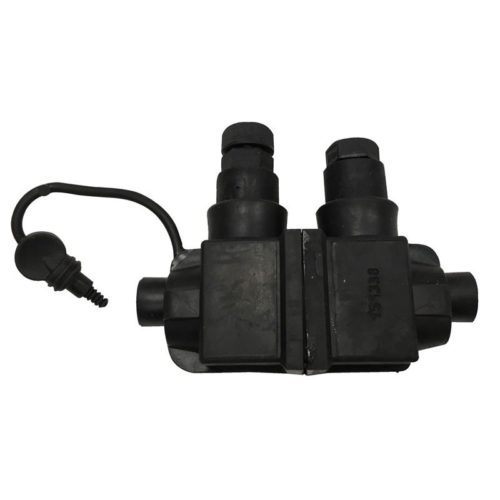
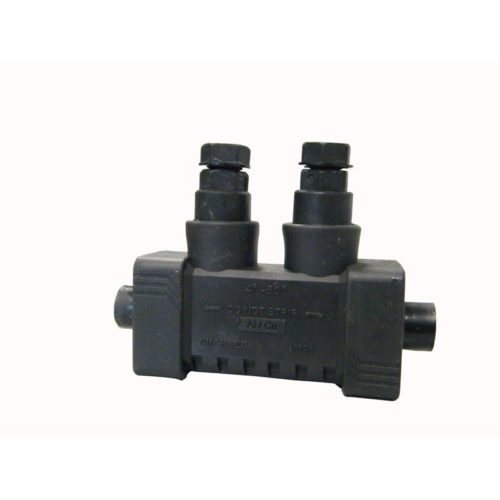 The service cable dismountable sleeve is designed to establish the connection between the aerial service cable to the customer cable with Al or Cu conductors. This sleeve is used in no mechanical load situation. The box is installed on the façade of the customer building. It includes service cable dismountable sleeves to connect the aerial service cable to the customer premise.
The service cable dismountable sleeve is designed to establish the connection between the aerial service cable to the customer cable with Al or Cu conductors. This sleeve is used in no mechanical load situation. The box is installed on the façade of the customer building. It includes service cable dismountable sleeves to connect the aerial service cable to the customer premise. -
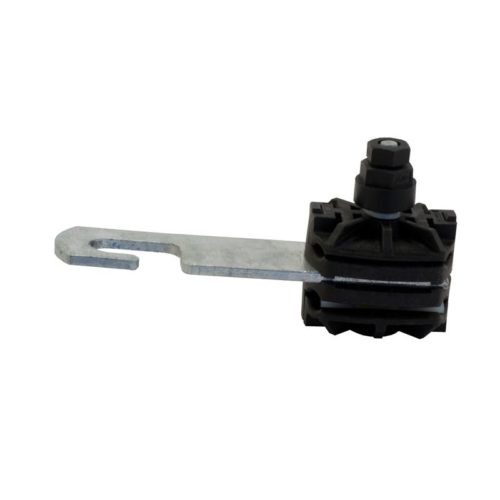
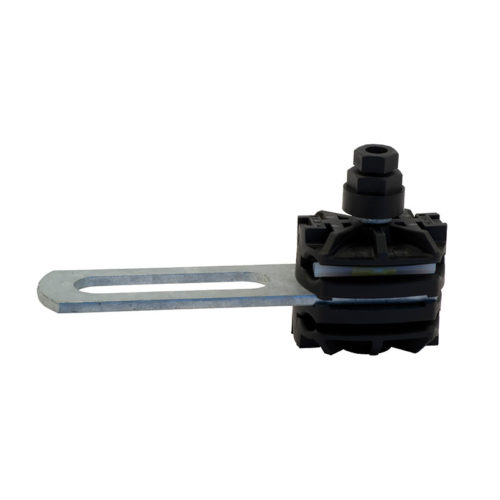 The service anchoring assembly EA 25 is designed for fixing low voltage service A.B.C. (Aerial Bundled Conductors) with capacity of 2x6 to 4x25mm². The anchoring clamp is also available in an adjustable hook version. The service anchoring assembly PA 35 is designed for fixing or suspending low voltage service A.B.C. (Aerial Bundled Conductors) with capacity of 3x16 to 4x35mm².
The service anchoring assembly EA 25 is designed for fixing low voltage service A.B.C. (Aerial Bundled Conductors) with capacity of 2x6 to 4x25mm². The anchoring clamp is also available in an adjustable hook version. The service anchoring assembly PA 35 is designed for fixing or suspending low voltage service A.B.C. (Aerial Bundled Conductors) with capacity of 3x16 to 4x35mm². -
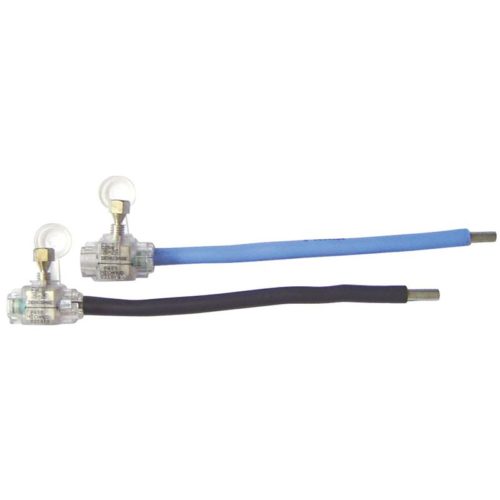
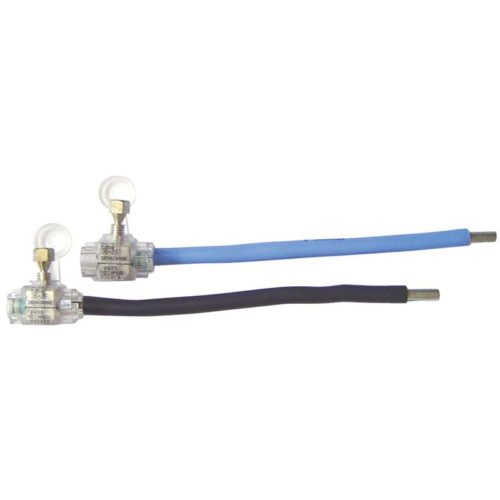 This end connectors range is used for the connection of leading in cables to electrical equipment terminals (cutouts, electronic meters, ect). It is a universal solution to connect the connection cable and the meter terminals no matter what is the metal or the block nature. They can be fitted on copper or aluminum stranded or solid core conductors.
This end connectors range is used for the connection of leading in cables to electrical equipment terminals (cutouts, electronic meters, ect). It is a universal solution to connect the connection cable and the meter terminals no matter what is the metal or the block nature. They can be fitted on copper or aluminum stranded or solid core conductors. -

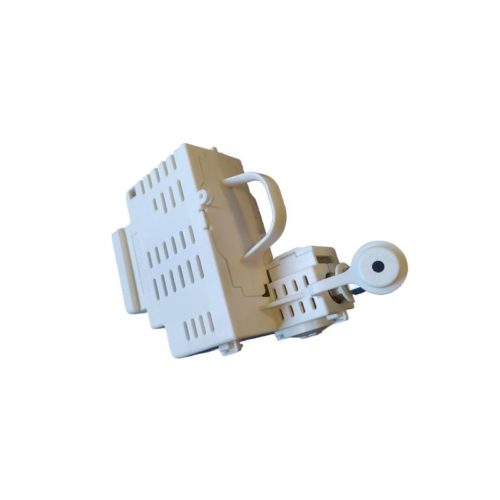 The fuse service module exists in 3 versions: 60A, 90A and 100A available in single or three phase kits depending on the model. In variation of the fused neutral, a triple neutral is possible. It is installed on the M12 standardized connection terminals of the set of bars support. It is used to tap a single or three phase service connection ensuring protection through fuses size 00 (60A and 90A modules) or 22x58 (100A module). The multitap connection module comprises 1 neutral and 3 phases. It allows a maximum of 3 single phase or 3 three-phase services to be connected. It is installed on the M12 standardized connection terminals of the set of bars support. It is mainly used when the AD fuses are installed in the customer premises.
The fuse service module exists in 3 versions: 60A, 90A and 100A available in single or three phase kits depending on the model. In variation of the fused neutral, a triple neutral is possible. It is installed on the M12 standardized connection terminals of the set of bars support. It is used to tap a single or three phase service connection ensuring protection through fuses size 00 (60A and 90A modules) or 22x58 (100A module). The multitap connection module comprises 1 neutral and 3 phases. It allows a maximum of 3 single phase or 3 three-phase services to be connected. It is installed on the M12 standardized connection terminals of the set of bars support. It is mainly used when the AD fuses are installed in the customer premises. -
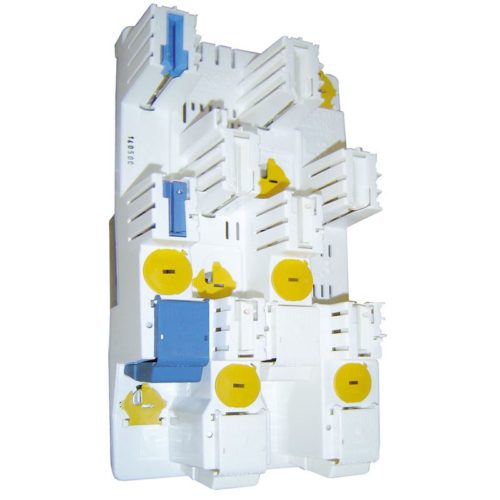
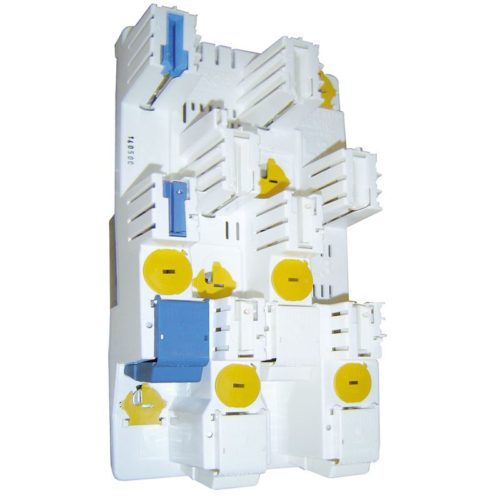 The REMIC module type RRCP offers a network outlet that can be cut (400 A function) or protected using maximum 200A fuses 115mm size 2 (200A function). It is installed on the M12 standardised connection terminals of the sets of bars supports. It is mainly used for supplying a collective or individual service with supervised power.
The REMIC module type RRCP offers a network outlet that can be cut (400 A function) or protected using maximum 200A fuses 115mm size 2 (200A function). It is installed on the M12 standardised connection terminals of the sets of bars supports. It is mainly used for supplying a collective or individual service with supervised power. -
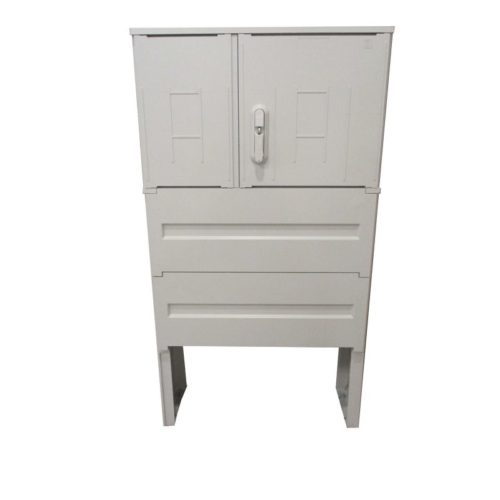
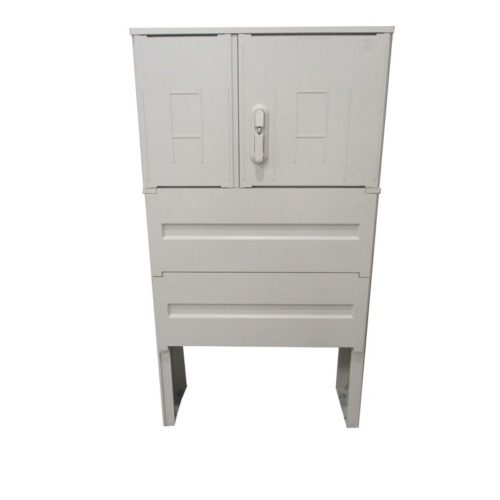 DIN cabinets exist in 3 widths and are designed to receive a 300, 450 or 600mm REMIC set of bars support. They use "common" equipment (direct connection network, service) and RRCP cutting / protection network connection modules. They are also designed for possible re-supply of the set of bars support without additional re-supply doors.
DIN cabinets exist in 3 widths and are designed to receive a 300, 450 or 600mm REMIC set of bars support. They use "common" equipment (direct connection network, service) and RRCP cutting / protection network connection modules. They are also designed for possible re-supply of the set of bars support without additional re-supply doors. -
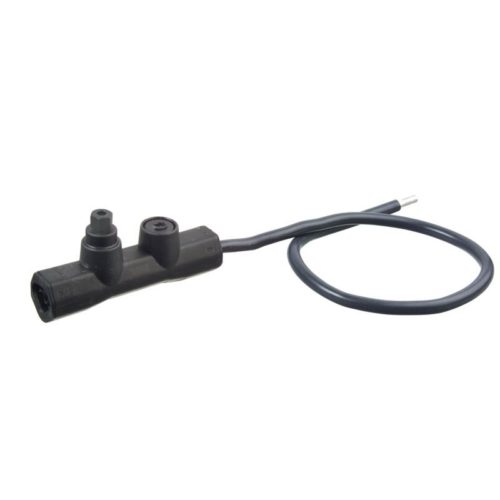
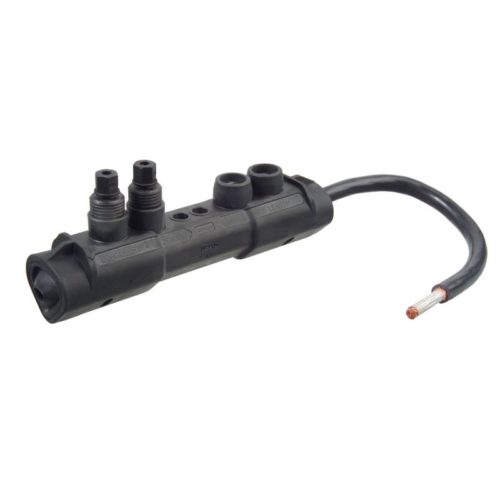 This end connector is used for connecting a conductor with a given section into a terminal with a smaller one. It is usually used for industrial supplies and long-line supplies. The fraud-preventing service connection is used for connecting a service conductor to an equipment terminal. Four models are available with black tail for Phase connection (K129 and K131) or blue for Neutral connection (K130 and K132). This solution is used to secure the outdoor connection to equipment terminals.
This end connector is used for connecting a conductor with a given section into a terminal with a smaller one. It is usually used for industrial supplies and long-line supplies. The fraud-preventing service connection is used for connecting a service conductor to an equipment terminal. Four models are available with black tail for Phase connection (K129 and K131) or blue for Neutral connection (K130 and K132). This solution is used to secure the outdoor connection to equipment terminals. -
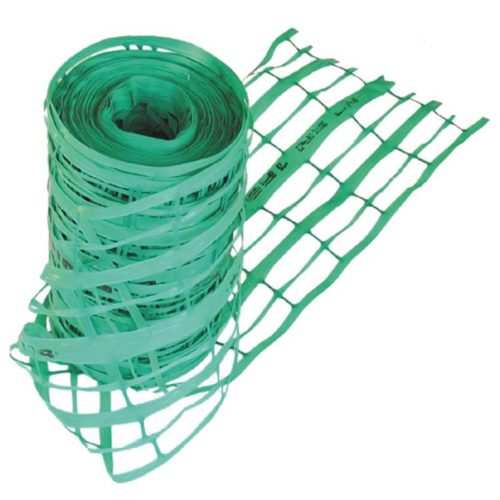
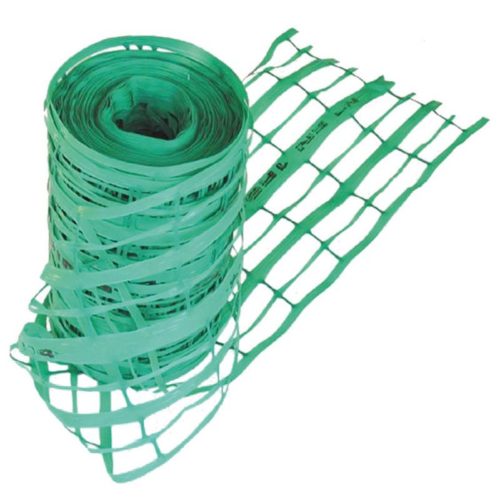 The protection plate roll (PPR) is designed to protect underground networks from extraction (pipes and/ or cables). It can be used for underground network under low load, engineering structure crossing, or in area of high density network. The warning netting is designed to indicate the presence of low voltage power line cables buried in the ground.
The protection plate roll (PPR) is designed to protect underground networks from extraction (pipes and/ or cables). It can be used for underground network under low load, engineering structure crossing, or in area of high density network. The warning netting is designed to indicate the presence of low voltage power line cables buried in the ground.
